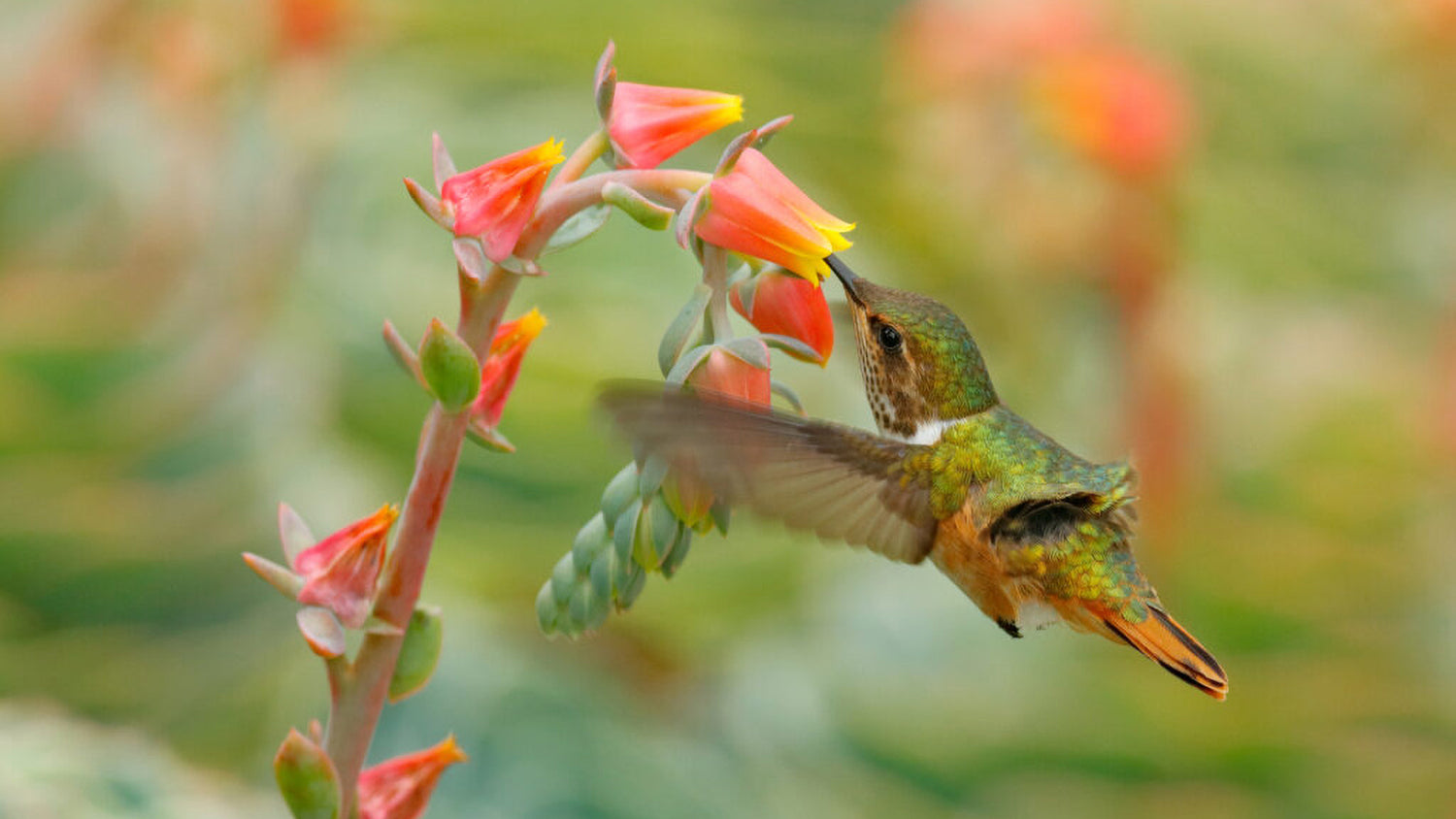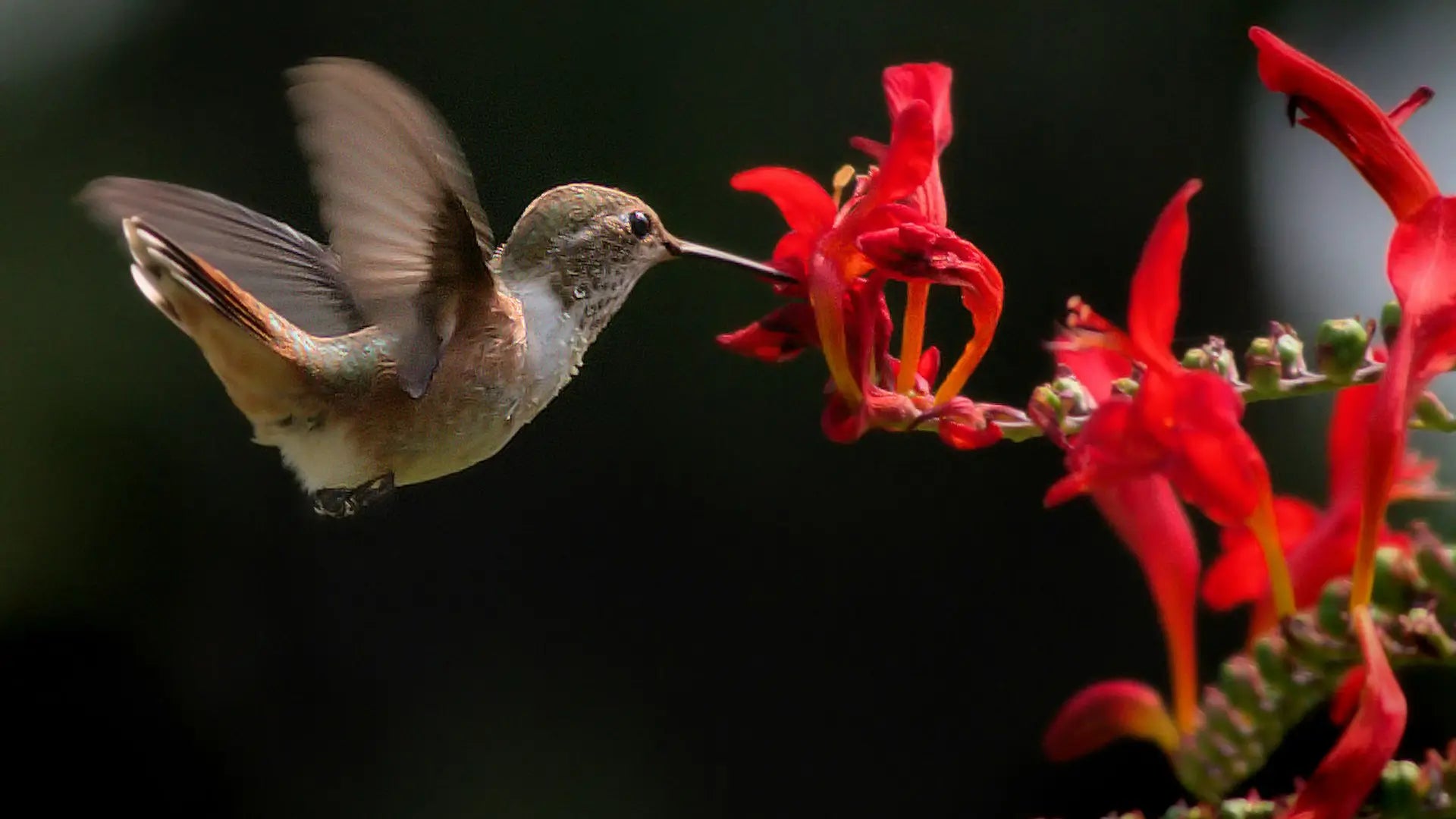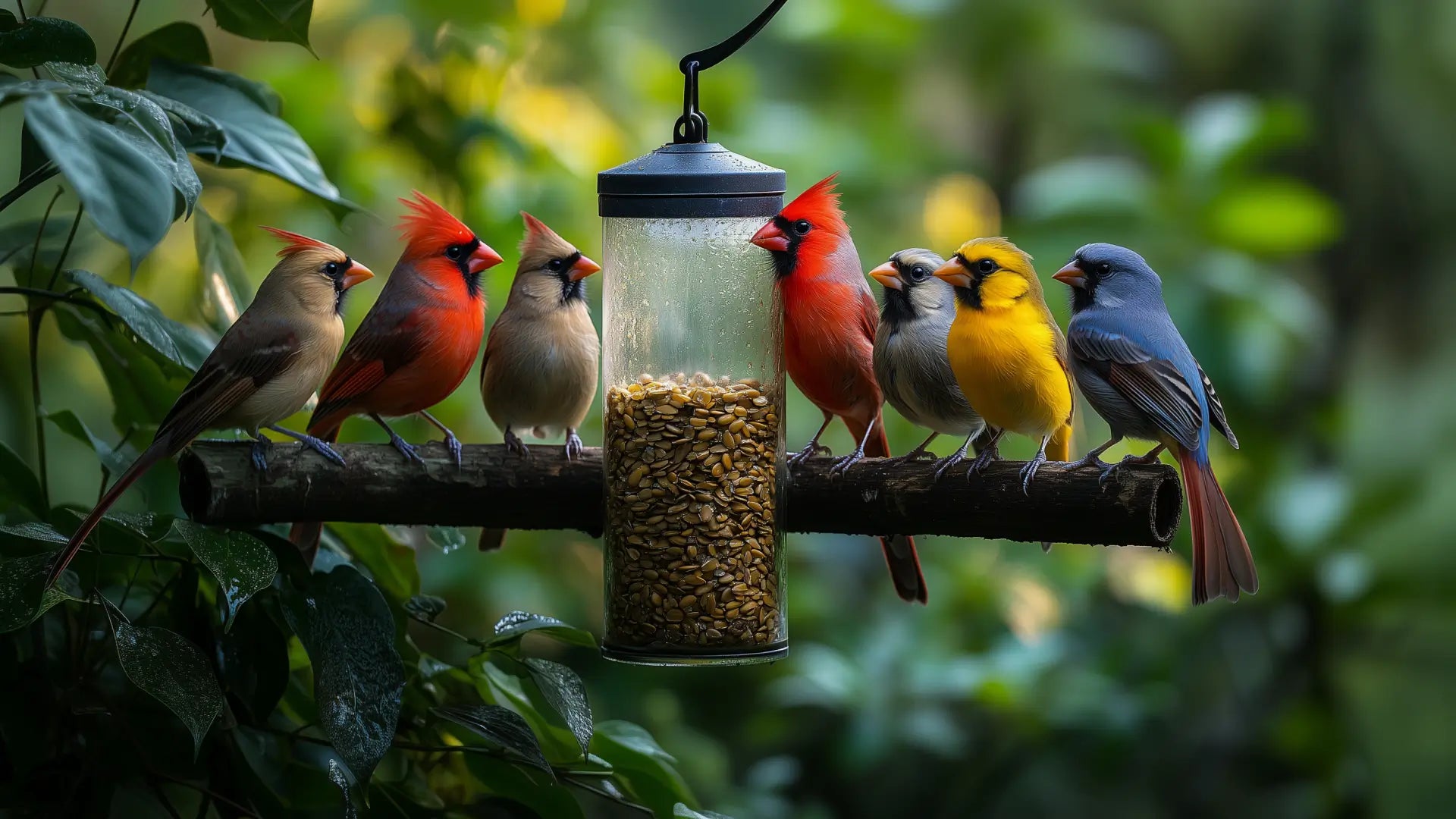Key Takeaways
Desert Columbine (Aquilegia desertorum)
Desert columbine’s red and yellow downward-facing tubular flowers are exactly what you might picture as a perfect flower for hummingbirds, so it’s no secret why this plant native to high elevations in Arizona, New Mexico, and southwestern Utah is the first one on this list.
Desert Honeysuckle (Anisacanthus thurberi)
From the same category of perfectly built hummingbird flowers is the desert honeysuckle, a red and orange flowering shrub that blooms each spring in New Mexico and Arizona.
Autumn Sage (Salvia greggii)
Autumn sage is a red flowering shrub native to western and central Texas. Its ruby-red flowers can feed the state’s native hummingbirds like black-chinned hummingbirds and broad-tailed hummingbirds.
Big Red Sage (Salvia pentstemonoides)
Another Texas sage, big red sage’s flowers are more pink than red. Thought to be extinct in the 1940s until its rediscovery in Bandera County in the 1980s (via the H.E. Butt Foundation), it’s native to a minimal range in central Texas.
Chuparosa (Justicia californica)

Desert Willow (Chilopsis linearis)
Desert willow is a tree whose pink flowers are sure to be attractive to hummingbirds and other pollinators throughout its range that stretches from Texas and Oklahoma to California. Despite its name, the desert willow isn’t actually closely related to willow trees.
Rush Milkweed (Asclepias subulata)
Firecracker Penstemon (Penstemon eatonii)
Well, back to the red tubular flowers. This widely distributed western plant grows tall stems of scarlet red flowers. Southwestern states as well as Colorado and Utah are among the states where it can grow.
Desert Penstemon (Penstemon pseudospectabilis)
Desert penstemon, also known as desert beardtongue, grows in deserts across Arizona, as well as parts of California, Utah, and New Mexico in areas surrounding the borders with Arizona.
Rocky Mountain Penstemon (Penstemon strictus)
Rocky Mountain penstemon grows similarly tall stems of flowers, but they’re typically purple, and it can grow a little bit farther north into states like Wyoming. It’s more widely distributed across Utah and Colorado than in Arizona and New Mexico. While it prefers dry soil, it will tolerate moisture better than most penstemons, according to the Lady Bird Johnson Wildflower Center.
Kingcup Cactus (Echinocereus triglochidiatus)
Also known as claretcup cactus among a slew of other names, the large red flowers of this cactus will attract hummingbirds, and it’s among the easiest cacti to grow, according to the USDA.
Purple Pricklypear (Opuntia macrocentra)
Our second cactus on the list, the purple pricklypear is native to the southern counties of Arizona, New Mexico, and Texas. It has yellow and red flowers in the spring.
Saguaro Cactus (Carnegiea gigantea)
One of the most famous plant species on the North American landscape is the saguaro cactus. Growing up to 40 feet tall, the saguaro cactus has white flowers at its top that may attract hummingbird visitors.
Hummingbird Trumpet (Epilobium canum)
Also known as California fuchsia, hummingbird trumpet is native to western and southern areas of the Golden State, as well as much of Arizona and Utah and parts of Oregon, Idaho, Wyoming, and New Mexico.
Red Yucca (Hesperaloe parviflora)
Red Yucca is native to central Texas, where it can thrive in high heat and periods of little water. It grows small pink flowers that can support the Lone Star State’s hummingbirds.
Parry’s Agave (Agave parryi)
Parry’s agave flower stalks are incredibly impressive, growing up to 20 feet tall and covered in yellow flowers. Hummingbirds may visit these clusters of flowers, but bats are actually the top pollinators, according to the USDA, which also reports that agave plants take quite a long time (decades!) before they begin to flower. So it’s not a plant for the impatient.
Tall Mountain Larkspur (Delphinium scaposum)
Tall mountain larkspur and its purple flowers can grow across much of the West. Among the beautiful larkspur plants, there’s also mountain larkspur, which grows in Wyoming, Colorado, and New Mexico, and the widespread Nuttall’s larkspur, which can grow as far east as Nebraska and South Dakota.
Coralbells (Heuchera sanguinea)
Native to southeastern Arizona and the southwestern part of New Mexico, coralbells is described by Proven Winners as “one of the easiest perennials to grow.” In the Southwest, these flowering plants will last through the year.
Yellow Trumpetbush (Tecoma stans)
Also known as yellow bells, yellow trumpetbush is native to parts of Arizona, New Mexico, and Texas. It’s a member of the trumpet vine family, Bignonias, with big yellow tubular flowers from which hummingbirds will feed.
And Beyond…





Leave a comment
All comments are moderated before being published.
This site is protected by hCaptcha and the hCaptcha Privacy Policy and Terms of Service apply.